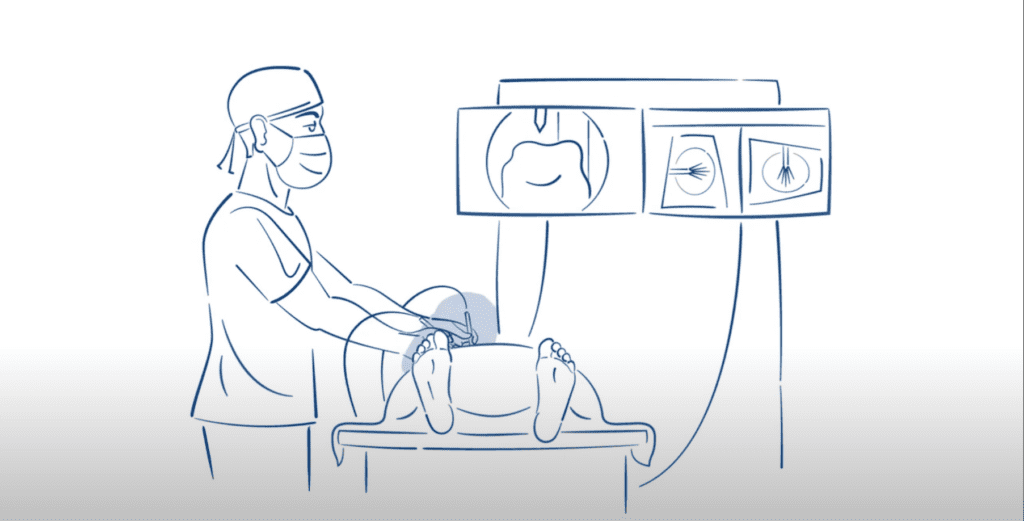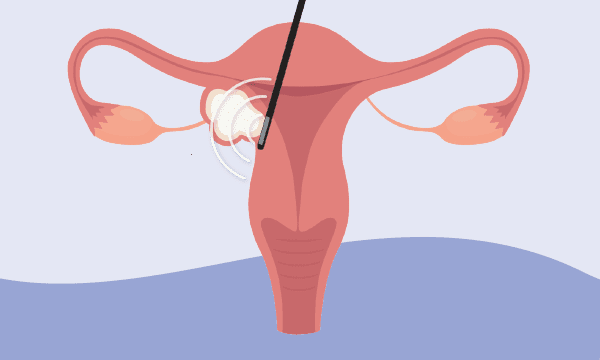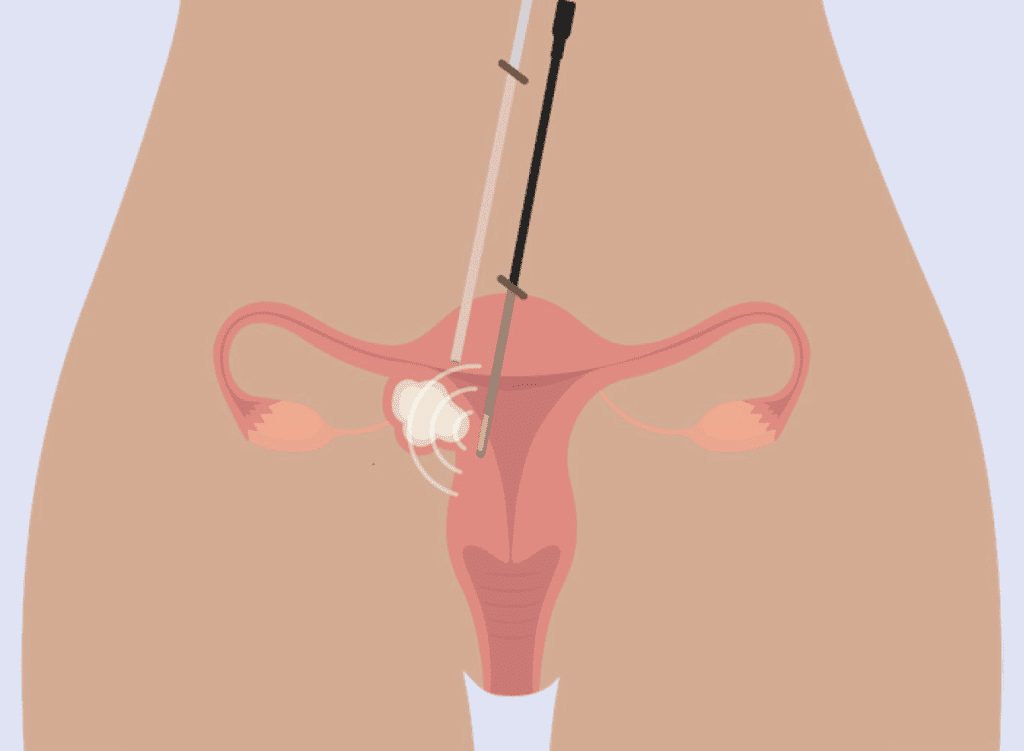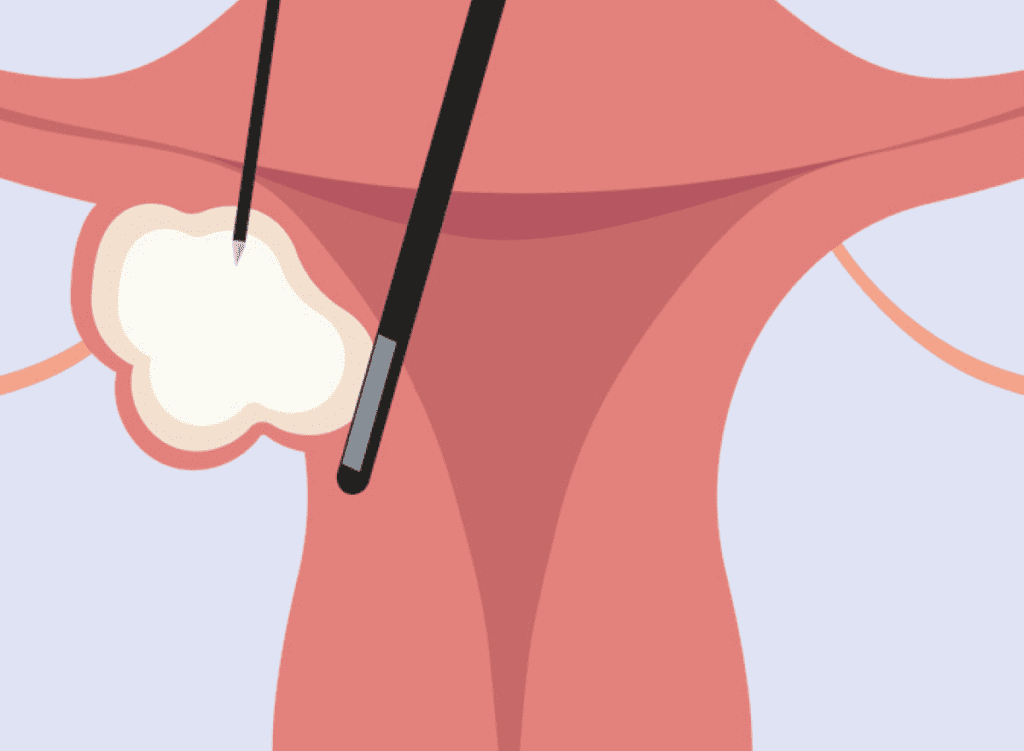Acessa® Laparoscopic Fibroid Ablation
A minimally-invasive solution for fibroid relief.
A better life is possible with the uterine-sparing Acessa procedure, clinically proven to reduce fibroid symptoms, including heavy menstrual bleeding.1

Fibroids, meet your match
77% of women will develop fibroids in their lifetime.2 You have options.
Acessa fibroid ablation is a non-hormonal, uterine-sparing solution for symptomatic fibroids. During the outpatient procedure, three small incisions are made in the abdomen to access the uterus, where Acessa treats fibroids with targeted radiofrequency energy. Patients treated with Acessa reported fast recovery, returning back to work in 4 to 5 days.
Get back in the game with Acessa.

Symptoms of fibroids
Heavy menstrual bleeding
Abdominal bloating and cramping
Pelvic, back and leg pain
Pain during sex
Frequent urination
Fatigue

Better starts here
Many women have chosen the Acessa procedure to
find relief from symptomatic fibroids.
Acessa is an outpatient procedure that can be performed anytime during your cycle, even during your period.
The Acessa procedure, at-a-glance

Acessa is a minimally-invasive, non-hormonal procedure that uses targeted heat to shrink fibroids—softening them from the firmness of a baseball to a marshmallow—relieving symptoms over time while keeping your uterus intact.
Could the Acessa procedure be right for you?
What does it treat?
Most symptomatic uterine fibroids
Who is a candidate?
A doctor can help determine if Acessa is right for treating your fibroid symptoms
How does it work?
Targeted heat is used to shrink fibroids
How long does it take?
The procedure lasts 1-2 hours depending on the number and size of fibroids
What does recovery look like?
Most patients are cleared to go home the same day, and return to work in 4-5 days
Are patients satisfied?
94% of women said the procedure helped with their symptoms
Acessa Treatable Fibroids
Fibroids are noncancerous tumors that grow in or around the uterus and are classified by their location. The Acessa procedure treats intramural, submucosal and subserosal fibroids by accessing the uterus through the abdomen.
| Fibroid type | Uterus location |
|---|---|
| A. Subserosal fibroid | On the outer uterus wall |
| B. Submucosal fibroid | Inside the uterine cavity |
| C. Intramural fibroid | Within the uterus walls |
Your physician will help determine which treatment is best depending on the size, location and symptoms of the fibroid.
The Acessa procedure, step-by-step
Before starting the procedure, your doctor will issue a pregnancy test to ensure you’re not pregnant. The procedure is performed under general anesthesia for patient comfort.

1. Access
To access the uterus, two small incisions are made in the abdomen for a small camera and ultrasound probe to locate fibroids.

2. Placement
Once the fibroid is located, the tip of the device penetrates the abdomen and is inserted into the center of the fibroid.

3. Ablation
Targeted heat is then used to ablate and treat the fibroid. This process may be repeated until each fibroid is treated.

4. End of Procedure
The equipment is removed from the abdomen and the two incisions are sutured. Over time the treated fibroid tissue shrinks, softens and is naturally absorbed by the body.**

[After the Acessa procedure] my periods were no longer heavy or painful, and I had no more cramping. I have a whole new lease on life.
MJ
Acessa PATIENT
Better is possible™
Don’t let fibroids hold you back.
If fibroids are impacting your life, don’t wait. There are treatment options.
Acessa laparoscopic fibroid ablation
Acessa fibroid ablation is non-hormonal, uterine-sparing procedure that reduces fibroid symptoms, such as heavy menstrual bleeding and bulk symptoms (pelvic pressure, bloating, constipation and frequent urination). This treatment targets multiple fibroids of various types and sizes in a single procedure, with most patients cleared to go home the same day, returning to work in 4-5 days.4
Other treatment options
Other treatment options include medication, hysterectomy, myomectomy and uterine artery embolization.
Your doctor can help you decide if the Acessa procedure or another treatment is right for you.
You have options
If you’re feeling unsure about what to do next or need help finding a doctor, don’t worry–we’ve got you covered.
Find Relief with Acessa
Locate an Acessa physician near you
Prepare for Your Visit
Bring up these questions and topics with your physician
Assess Your Period
Find out if your period is actually ‘normal’
Go Back to Basics
Understand the symptoms
and types of fibroids
Frequently Asked Questions
Is the Acessa procedure right for me?
If you have symptomatic uterine fibroids and suffer from heavy menstrual bleeding, you may a candidate for the Acessa procedure. The Acessa procedure is not appropriate for women who are currently pregnant. Talk to your doctor about your fibroids to determine the best treatment for you.
Can I still become pregnant after the Acessa procedure?
Insufficient data exists on which to evaluate the safety and effectiveness of Acessa procedure in women who plan future pregnancy. Therefore, the Acessa procedure is not recommended for women who are planning future pregnancy. There is limited data regarding pregnancy following the Acessa procedure. If you become pregnant following the Acessa procedure, you should contact your doctor immediately.
What can I expect after the Acessa procedure?
In terms of when you will see symptom relief, it depends on how big the fibroid is and what symptoms you were experiencing. Each fibroid is different, and each symptom is different, so the timeline truly varies from woman to woman.
- In clinical studies, patients were able to return back to work within 4-5 days.
- Most women experience relief in the first 3 months and continual improvement for 12 months.
- 94% of women in the clinical study said the procedure helped with symptoms
Most patients report they have significantly lighter periods and alleviated pelvic pain and pressure. Often, patients who experience “bloating”—looking pregnant having a distended abdomen from the fibroids, report reduced or eliminated bulk symptoms. Results may vary.
What are the risks?
Rare but serious risks of this procedure include, but are not limited to, infection, internal injury, blood loss and complications related to laparoscopic surgery and/or general anesthesia. Talk to your doctor about the benefits and risks and alternatives prior to having the Acessa procedure.
Talk with your doctor about the risks and benefits of surgery and find out if Acessa may be right for you.
Are women satisfied with the Acessa procedure?
The results of the Overall Treatment Effect Survey of the pivotal study of 124 patients showed that 94% responded that they were very satisfied, moderately satisfied, or somewhat satisfied with the treatment. At 12 months post-treatment, 98% reported that they would probably or definitely recommend the procedure to their friends with the same health problem.
Is the Acessa procedure covered by insurance?
Many insurance companies and Medicaid carriers cover the procedure. We understand that some patients have received incorrect information from insurance call centers. We suggest scheduling an appointment with an Acessa- trained physician to discuss whether the procedure is appropriate for you. If the Acessa procedure is a match for your fibroid treatment, then your physician’s office will request insurance approval in advance by submitting a pre-authorization request.
Prior Authorization
Most insurance companies require that you or your doctor requests “prior authorization” before they cover the Acessa procedure. In the request, the doctor describes the nature of the patient’s condition and why it is necessary to perform the Acessa procedure. The insurance company reviews the request and makes a determination regarding insurance coverage under the patient’s insurance plan. This determination is either an “approval” of the prior authorization or a “denial,” which means the insurance company explicitly is not committing to paying for the procedure being requested.
Insurance Appeals
If you are facing an appeal with your insurance denials while struggling with fibroid symptoms, the experience can be overwhelming. Hologic offers resources to physician offices and has successfully helped dozens of providers overturn denials Although we cannot guarantee approvals or coverage, physician offices are here to support you in the process. If you are a patient who is concerned about your insurance covering the Acessa procedure, have experienced an insurance denial or have been denied access to the Acessa procedure through your commercial or Medicaid plan, you can reach out to our Insurance Support and Reimbursement Manager at Behnaz.Asgar@hologic.com.
Join our community
Women are often told pain and heavy bleeding are a normal part of their cycle. We know that’s not the case. Advocating for your health starts with knowing your body. We’re here to help you to take your first steps toward better.
Get to #KnowYourU (uterus) and find care that’s
best for you!

* Women surveyed in a clinical study
** In the Acessa clinical trial most women experience relief in the first 3 months and continual improvement for 12 months
References
- Acessa IFU. ↩︎
- Johns Hopkins Medicine. https://www.hopkinsmedicine.org/health/conditions-and-diseases/uterine-fibroids. Accessed June, 2025. ↩︎
- Chudnoff SG, Berman J, Levine DJ, Harris M, Guido RS, Banks E. SG Chudnoff, et al. Outpatient procedure for the treatment and relief of Symptomatic Uterine Myomas. Obsterics and Gynecology, 2013;121(5):1075-82. ↩︎
- Braun KM, Sheridan M, Latif EZ, et al. Surgeons’ early experience with the Acessa™ procedure: gaining proficiency with new technology. International journal of women’s health. Int J Womens Health. 2016;8:669-675 ↩︎
Important Safety Information
The Acessa ProVu system is intended to identify and shrink symptomatic uterine fibroids. The Acessa ProVu system is used by trained physicians during laparoscopic surgery under
general anesthesia. Rare but serious risks of this procedure include, but are not limited to, infection, internal injury, blood loss and complications related to laparoscopic surgery and/or
general anesthesia. This procedure is not recommended for women who are planning future pregnancy. This information is not medical advice. Please discuss the risks and benefits with your doctor to find out if the Acessa procedure may be right for you.